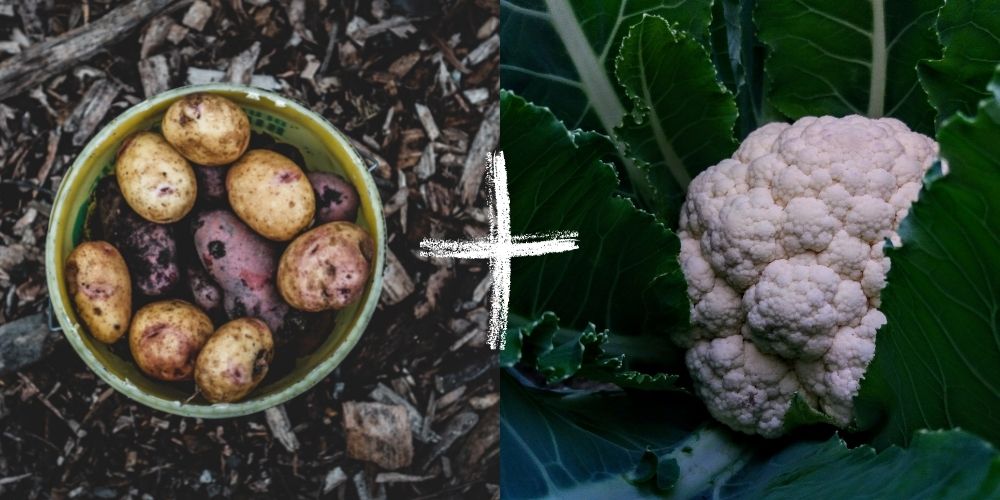Lettuce and cabbage are similar in appearance, they are high in fiber, and they can both be part of a healthy diet. However, they don’t belong to the same plant species. Lettuce is part of the Asteraceae family, which also includes artichokes, chicory, and dandelions. Cabbage belongs to the Brassicaceae family, which also includes kale, broccoli, and cauliflower. Vegetables in this family are classified as cruciferous vegetables.
Similarities and Differences
Both lettuce and cabbage are grown above ground and contain many layers of leaves. They both have short stems, with cabbage having tougher leaves. Both vegetables come in different varieties such as iceberg lettuce, romaine lettuce, red leaf lettuce, butter lettuce, green cabbage, red cabbage, Napa cabbage, and savoy cabbage. Lettuce has a water content of about 95%, slightly more than cabbage has. Lettuce is greener because it has more chlorophyll than cabbage does. Cabbage is more common in cooking than lettuce, which is normally eaten raw.
Nutritional Content
Healthline Media published an article comparing green cabbage and iceberg lettuce, two common vegetables in grocery stores that look alike. According to the article, green cabbage packs more nutrients with a 100-gram serving containing 96% of your reference daily intake of Vitamin K (compared to 30% for iceberg lettuce), 61% of your RDI of Vitamin C (5% for iceberg lettuce), and 11% of your RDI for folate (7% for iceberg lettuce). Iceberg lettuce rates higher in Vitamin A, with a 100-gram serving delivering 10% of your RDI of Vitamin A (compared to 2% for green cabbage).
 Both vegetables are excellent sources of fiber, with green cabbage containing three grams of fiber and iceberg lettuce having one gram of fiber per 100 grams. Fiber is ingestible plant material that promotes digestive health. A diet high in fiber keeps you filled up, helping to maintain a healthy weight. Fiber can also help you maintain healthy blood sugar levels, strengthen your immune system, and enhance heart health.
Both vegetables are excellent sources of fiber, with green cabbage containing three grams of fiber and iceberg lettuce having one gram of fiber per 100 grams. Fiber is ingestible plant material that promotes digestive health. A diet high in fiber keeps you filled up, helping to maintain a healthy weight. Fiber can also help you maintain healthy blood sugar levels, strengthen your immune system, and enhance heart health.
Different varieties of lettuce and cabbage, however, have different nutritional profiles. In comparing green cabbage to red cabbage, green cabbage is higher in Vitamin K, while red cabbage is higher in Vitamin A and iron. Romaine lettuce and red leaf lettuce are richer in nutrients than iceberg lettuce. A 100-gram serving of romaine lettuce contains 34% of your daily value of folate, while 85 grams of red leaf lettuce has 149% of your DV of Vitamin K and 127% of your DV of Vitamin A.
Both lettuce and cabbage are great for people on a low-carb diet such as the keto diet. Low-carb vegetables generally contain five grams or less of net carbs per 100-gram serving (net carbs are total carbs minus fiber). According to the Diet Doctor website, per 100 grams, lettuce has two net carbs and cabbage has three net carbs.
How to Use Them
Both lettuce and cabbage can be incorporated into your meal plan in many ways. Lettuce commonly forms the base for salads, including tossed salads and Caesar salads. Include other healthy ingredients in your salad such as nuts, seeds, and fruit. Lettuce can be added to smoothies, stir-fries, sandwiches, burgers, rice and noddle bowls, and spring rolls. Make lettuce wraps as a replacement for tortillas. Lettuce can also be an ingredient in sauces.
Cabbage rolls, cabbage soup, and coleslaw are three popular uses of cabbage. Cabbage rolls, for example, is a healthy source of carbohydrates (which is the body’s main source of fuel), with a 200-gram serving containing about 15 grams of carbs. Cabbage is also great for stews. Make a cabbage lentil soup for a good source of plant-based protein, or add some color to your salad with red cabbage. Napa cabbage is a key ingredient in kimchi, a fermented Korean dish.
- How to regrow Romaine Lettuce in water
- What Flowers Don’t Attract Bees and Wasps?
- What is the Difference Between Heirloom and Organic Seeds?
A Healthy Diet
Both lettuce and cabbage are great additions to a balanced diet. Many people have difficulty consuming enough vegetables on a daily basis, and lettuce and cabbage present a lot of easy and tasty ways to increase your vegetable intake. Cabbage may be the better choice nutritionally, but they are both considered healthy foods (they are low in calories, and high in fiber, vitamins, minerals, and antioxidants). When choosing lettuce, select a nutrient-dense type such as romaine or red leaf lettuce.
















